Buonasera Gentle Reader,
I would like to take a moment and just let you doubters know that after being kept up until 3:30am by the (absolutely wonderful) Sir Helga and Baroness Zahra on Between Two Peers I am actually sewing today.
But that’s not why you’re here.
I know why you’re here.
You want to know my references.
Not even a how’dya do first. Hmph.
I’m going to group these by garment, some are just images, some will be links.
Partlet:
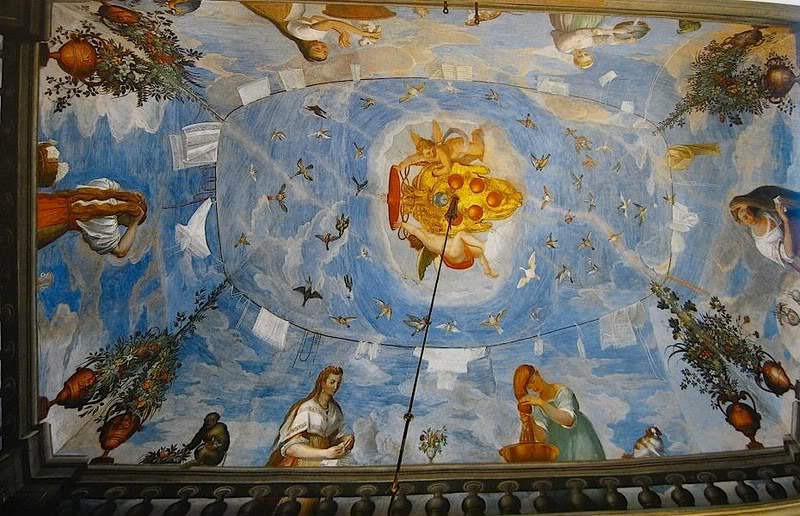
Check out the laundry line, you will see a partlet drying on the line. I love that the visiting dignitaries would be housed in the apartments along the hallway for this ceiling. The subtle messaging that you were good enough for the working class Italian women.
In Wolf’s Clothing’s Italian Renaissance Costuming Challenge Post about making a similar partlet
Overview of Flemish (Peasant) Partlets on Maniacal Medievalist by Esperanza de Navarra – I don’t see proof of cartridge pleating in the Italian working class garments, but similar construction up until that point.
Camicia:
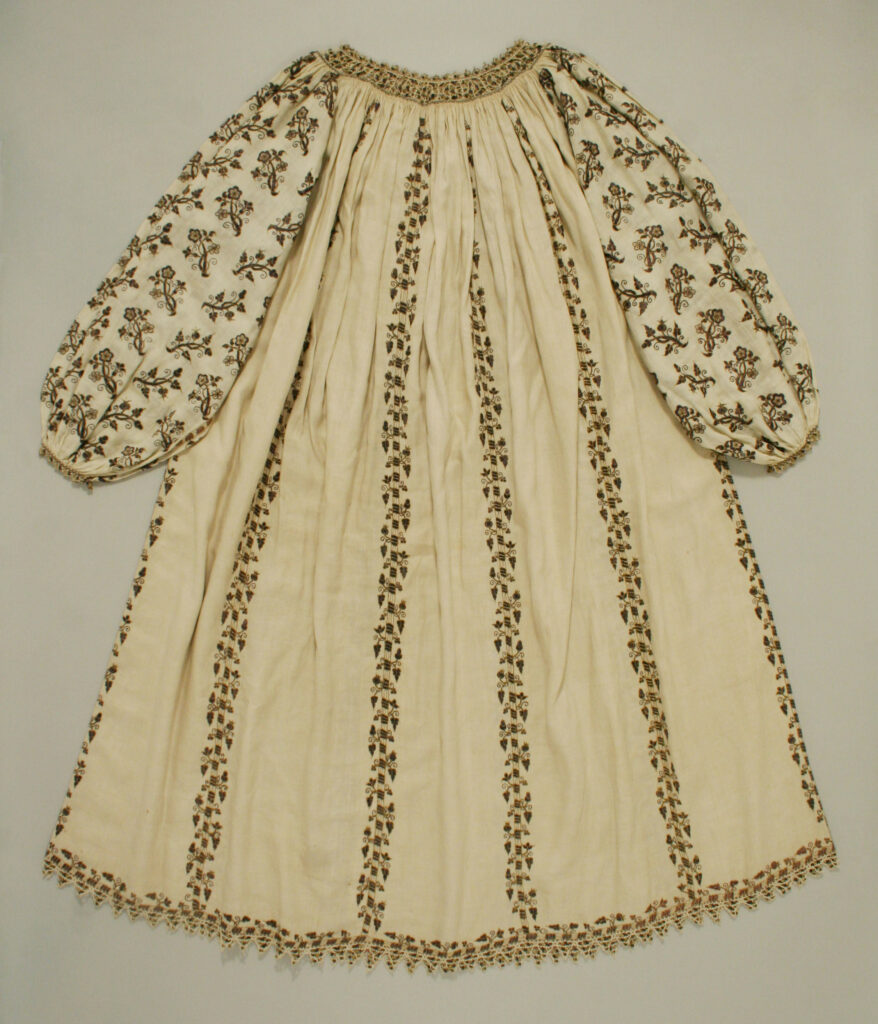
Making a “Peasant” version of this camicia from the Metropolitan Museum of Art – as such I will be leaving out the vertical embroidery, but will be embroidering the sleeves.
The Met has a second “Smock” with polychrome embroidery on the sleeves as well as referenced in my earlier post about the camicia. Late 16th Century “Smock” Metropolitan Museum of Art Accession Number: 10.124.1
Using the Pattern/Measurements from Mistress Bella Lucia de Verona on her site Realm of Venus – I did make slight adjustments to the extant piece to widen and lengthen the sleeves to allow for inheriting my, as my beloved Mother calls them, “Father’s Orangutan Arms”.
Embroidery design is from ArtEmbroidery.ca’s digitized collection of designs from The Trevelyon Miscellany by Thomas Trevelyon. This is an Elizabethan pictorial and poetical manuscript commonplace book, 1608.
Specifically on the camicia sleeves I am using design 19, which I felt evoked the feeling of the original embroidery of the Venetian extant piece, while bringing in the strawberry theme.
Dress:
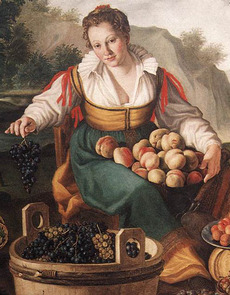
Vincenzo Campi, The Fruit Seller (detail), 1580, oil on canvas, 145 x 215 cm, Pinacoteca di Brera, Milan
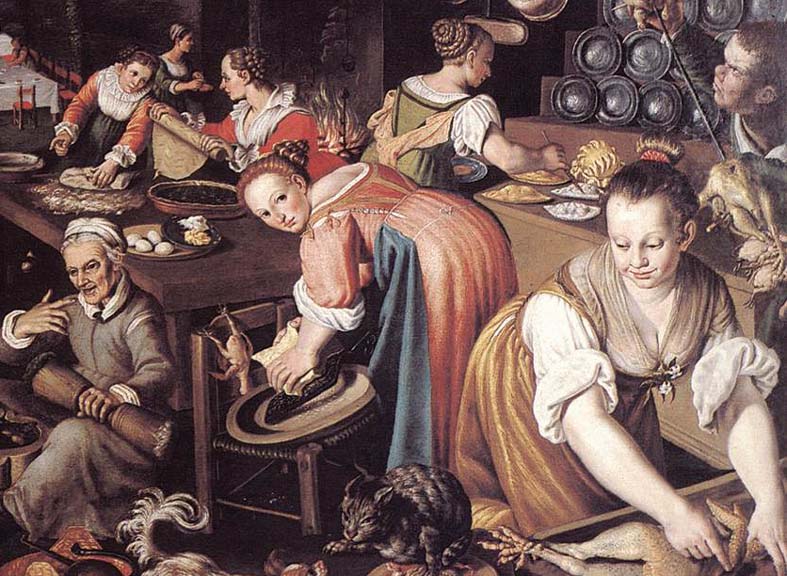
Sophie’s Stitches overview on Italian Working Class Dresses from 1575-1600
Festive Atyre’s Blog Post on Italian Working Class Dress
Cesare Veccelio’s Habiti Antichi et Moderni translated and published as The Clothing of the Renaissance WorldEurope, Asia, Africa, the Americas : Cesare Vecellio’s Habiti Antichi Et Moderni By Cesare Vecellio, Margaret F. Rosenthal, Ann Rosalind Jones · 2008
Specifically the woodcuts of an Unmarried Peasant Woman of Tuscany, Peasant Woman of Cividale, a Peasant woman from outskirts of Venice as seen in town on Ascension Day, and Venetian Woman Blonding Her Hair
Apron:
Many extant aprons of the period that have survived are delicious confections of lacy beauty, but hardly practical for a humble fruit seller, or even a courtesan Contessa engaging in some peasant dress-up.
A Collection of extant aprons at Realm of Venus – some have lace embellishment, one has a woven red border, and one has polycrome embroidery
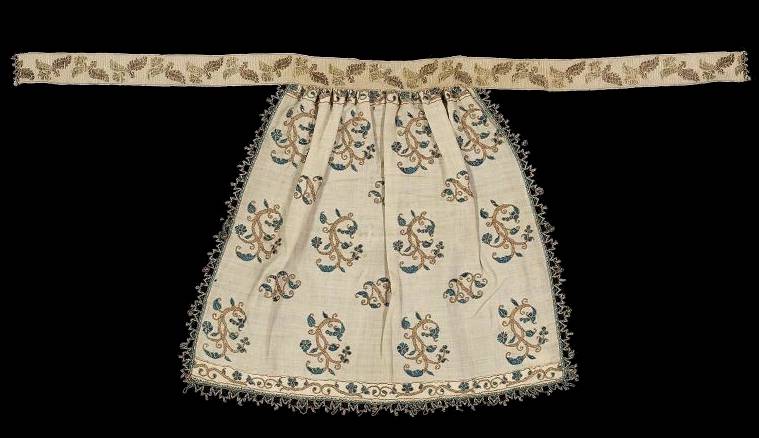
Dimensions: 44.5 x 90 cm (17 1/2 x 35 7/16 in.)
Material: Linen ground with gold metal and silk embroidery, gold metal and silk cord trim, and a gold metal and silk ribbon waistband. ACCESSION NUMBER 43.1034
Metropolitan Museum of Art Cutwork Apron, early 17th Century Accession Number: 23.49.1
Chicago Institute of Art Apron Made 1601–1700 Linen, plain weave; pulled thread work with silk floss in two-sided Italian cross stitch; inside waistband gathered by feather, running, and back filling stitches; edged in silk, warp twining with ground weft fringe, attached by buttonhole and detached buttonhole stitches. Reference Number: 1976.332
The Cooper Hewitt Apron Apron (Italy), 17th century; linen; H x W: 71.1 x 78.1 cm (28 x 30 3/4 in.); Gift of Anonymous Donor; Accession Number 1952-162-134. “This is a Apron. It is dated 17th century and we acquired it in 1952. Its medium is linen and its technique is plain weave, embroidered with cutwork and needle lace fillings.”
Embroidery design is from ArtEmbroidery.ca’s digitized collection of designs from The Trevelyon Miscellany by Thomas Trevelyon. This is an Elizabethan pictorial and poetical manuscript commonplace book, 1608.
Specifically on the camicia I am using design 4, which I felt evoked the feeling of the original what I assume to be woven or embroidered embellishment in the surviving portraiture while again, bringing in the strawberry theme.
Saccoccia (Pocket):
First, see the Allori fresco above of the Pitti Palace loggia of a woman in her underdress with a pocket. Allori also depicts a pocket tied to either a doublet or stays of some sort here:
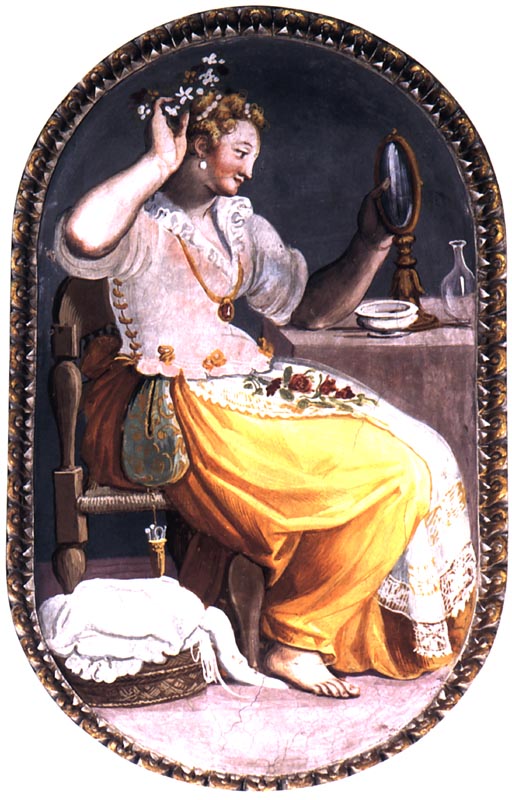
“The woman is portrayed in the act of dressing her hair with fresh flowers, a custom typical of Tuscan women. From her waist hangs a pocket or ‘saccoccia’ made from a precious fabric patterned in gold (cf. also fig. 30) and a needle case where we can glimpse the tip of the scissors.”
Elizabeth’s Pens and Needle’s Blog Post about an Elizabethan Blackwork Pocket
Bonus items that may or may not get done (I do love a good mystery!):
Corded Stays:
Mantua Maker Patterns No. 1500-4
Garter:
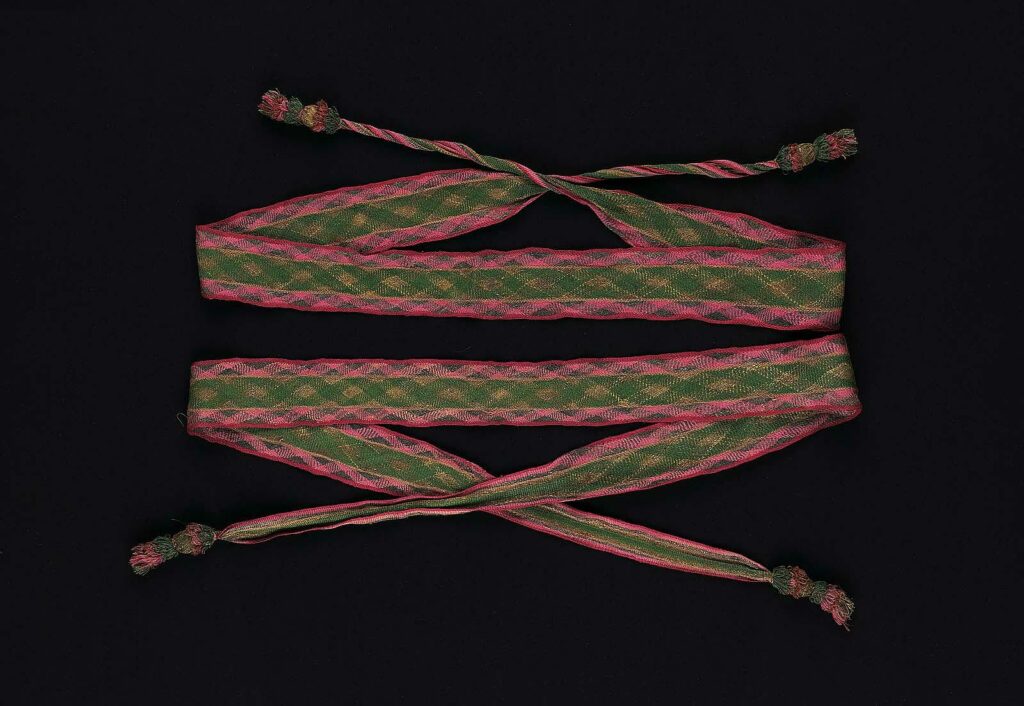
With Love and Gilded Stitches,
-Fortune


Buonasera or How’dya do from Aurelia (one of your judges)
Your reference materials are giving me ideas of more projects to add to my seemingly never ending list of things I want to do.
I’m glad to hear you have started your Blietzkrieg of sewing. I look forward to seeing the products of your flurry of activity.